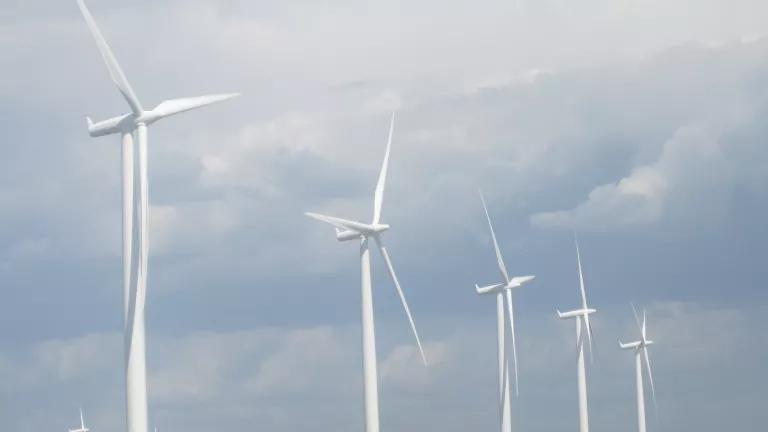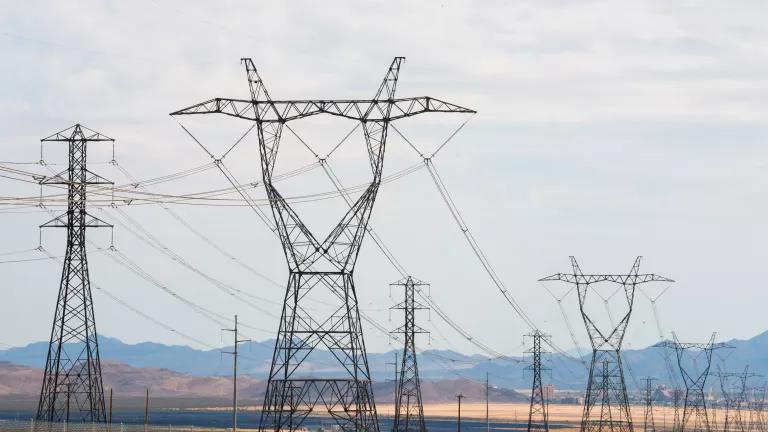Solar Helps Keep the ACs Humming in Texas
In a month that has seen Texas sizzle under record-breaking heat, solar, and wind power have been key to helping keeping the lights on—and air conditioners humming.

A large solar panel array near Austin, Texas.
iStock
The wind may not always blow and the sun may not always shine, but in a month that has seen Texas sizzle under record-breaking heat, renewable power has been key to keeping the state’s electric grid functioning. That’s especially true of solar power, which runs at predictably high levels during hot summer days.
Thermal resources like coal and natural gas, on the other hand, have been struggling. This is especially harmful because the grid operator mischaracterizes them as “dispatchable,” which is supposed to mean available when called upon, but many of these plants falter during hot weather and can’t provide power to the grid.
The conclusion is clear: Wind, solar, and storage are helping to stabilize the power grid during this extreme heat while lowering energy bills for consumers—and helping us all fight climate change. Texas is now a clean energy powerhouse, and it’s time for it to construct the electricity system that will allow that energy to shine.
Texas grid operator ERCOT reported a new solar generation record this Monday of 9,639 megawatts, with solar energy accounting for a whopping 12 percent of the peak demand of 79,000 megawatts, a record. That surpassed the previous demand record set last Tuesday by more than 600 megawatts and is forecast to be eclipsed this week as the state braces for more excessive heat. Texas has set multiple days of record power demand so far this year—and we aren’t even in August yet.
Fossil and gas plants—not so reliable after all
Thermal plants have struggled in these extreme weather conditions. In its summer adequacy assessment, published in May, ERCOT forecast that coal and gas plants would run at about 90 percent of capacity when needed. That hasn’t happened. Last week, thermal generators were down 13,000 megawatts, well below their expected performance levels. Those unforeseen shutdowns represented a whopping 16 percent of total system demand in the ERCOT region—enough electricity that would’ve kept the power grid humming at peak demand without a hiccup.
Even worse, because ERCOT doesn’t anticipate large coal or natural gas generators falling so short of forecasts, when those thermal plants do trip offline, they put enormous stress on the power grid.
Thermal outages are “definitely a big issue,” Ric O’Connell, executive director of GridLab, told Utility Dive. “It shows that the thermal fleet is not as reliable as people would have you think…Renewables are meeting the forecast and are well within the boundaries of” the seasonal forecast, he said. The reality is that, just as with cold spells, prolonged heat is hard on thermal power plant equipment, and more breakdowns occur the longer the heat sticks around.
Meanwhile, the grid operator is well aware of the variable nature of renewables. That’s why it provides day-ahead forecasts for wind and solar power, forecasts that have been largely accurate in predicting peak power production for those resources. But ERCOT has yet to explain which thermal plants are offline—or why.
“We have a very good idea of how wind & solar will perform this week (projections are high btw) but no idea how much gas & coal will be online,” energy analyst Doug Lewin tweeted Monday. “There’s no spreadsheet, no dashboard looking a week ahead (or even one day ahead) for thermal like there is for wind & solar.” In contrast, the power grid operator for the Midwest and middle South, MISO, clearly identifies the levels and types of daily thermal power plant outages on its real-time operations webpage.
In one important way, ERCOT is being dangerously misleading. When the grid operator asked customers to curb power use last week, it provided a chart that showed wind power capacity during the “tightest hour,” which was at 3 p.m. But the very reason ERCOT calls 3 p.m. the tightest hour is because that’s the time wind production is typically at its lowest. During peak power demand in the early evening, wind output typically picks up just as solar output declines with the setting sun. If you’re not following these markets closely, subtle distinctions between long-term and day-ahead forecasts, or between tightest hour and peak hour might not be readily apparent.
Fortunately for Texans, help is on the way in the form of more solar and energy storage, which are a powerful combination during peak summer demand periods. ERCOT forecasts nearly double the amount of solar power by next July and three times the amount of battery storage; in total, more than 30,000 megawatts of installed capacity.
Let’s be clear: No one power source is entirely foolproof
As we saw in last year’s winter storm, gas supplies get interrupted, and equipment can freeze. When we hit record high temperatures, cooling water for coal or nuclear plants is not so cool, and therefore plants may need to shut down so they don’t overheat. And yes, there will come a time when there’s strong demand, but the sun isn’t shining or the wind isn’t blowing. The answer to all of this, however, is not to try and place blame, but to create a system that can work together and deliver the reliable and resilient grid we all want and need. ERCOT hasn’t done nearly enough to spur energy efficiency, improve demand response, and increase transmission connections on its grid. It’s long past time for it to get to work.




